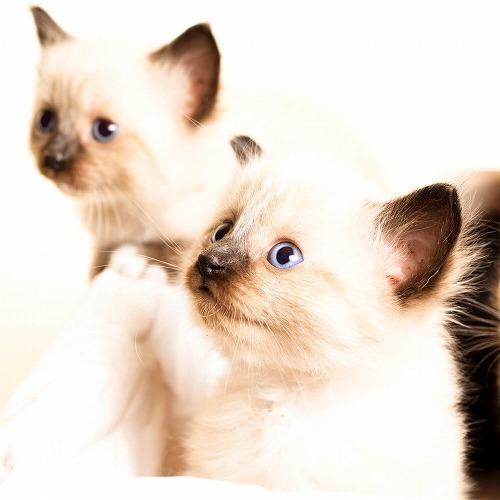|
|

The Siamese has been a long standard favorite breed amongst cat owner’s worldwide. They originally came from what is now known as Thailand hundreds of years ago and is well respected as one of the oldest (known) breeds. The Siamese has been crossbred with a number of breeds to produce the Himalayan, Oriental longhair and Oriental shorthair, the Javanese and the Tonkinese. The Siamese was even crossbred with a serval to create the Savannah cat. There are also three different varieties of the Siamese; the old-style Siamese, the classic Siamese as well as the apple head (which obviously is related to the differed head shape, which “apparently” resembles an apple). The apple head was a derogatory name by some very “esteemed” breeders who didn’t accept the variation in head shape.
1. History
The typical Siamese cat we picture (with darker points on a cream colored base of fur) has been depicted in ancient manuscripts of Thailand (formerly Siam) for centuries. The exact origin era can’t exactly be determined, however one of the first recorded Siamese cats were with a dark chocolate brown points. Now Siamese cats have a range of colorings including the red, teal,lilac, chocolate, tortishell and tabby points. Interestingly the Siamese cat is called the Wichienmaat in Thailand.
2. Appearance
We have all no doubt met a Siamese cat at some point. They are known for their long and slender body type. They have an angular face and large (mostly blue eyes). The original cause of the familiar markings is a result of a genetic mutation to a gene (interestingly it is considered to be from partial albinism). The old-style Siamese has a very slender body, short fur and doesn’t shed much fur. Obviously because of being originated in a warm climate, the short fur was an advantage.
3. Personality
The Siamese is a highly intelligent cat, some Siamese cat owner’s even report that they can be trained to perform a range of tricks. They are a companion breed and can become incredibly fond (and protective of their owners). They are also incredibly vocal and have a raspy meow. They are known to (at times) bully other more submissive cats and they tend to get along better with other Siamese or hybrids of Siamese. They don’t like being along for a long time and can cause a bit of havoc if they are left alone at home for long periods. They also tend to be very enthusiastic hunters, to ensure they have a cat bell if you are having them outside for a length of time.
Sadly Siamese cats have been known to suffer depression when left alone for long periods of time (which is why so many people tend to buy them in pairs).
4. Genetic Defects
- They obviously have a shorter life span than a domestic cat. They tend to live 11-15 years in a safe and happy home
- Cats with a pink nose need to be careful (and their owners) because of the risk for skin cancers
- Liver problems (they tend to have some issues breaking down heavy proteins).
- Heart defects (as with most pedigree breeds).
- Interestingly there was a Swedish Siamese called “Scooter” who managed to live for 30 years!
- Bizarrely many Siamese cats have been born with eye defects, including a condition (common with albinism) that affects how to the eye responds to bright lights.
- Siamese cats are also frequently affected by cross eyes which now has been relatively bred out, but still can be present.
Tag
Tag